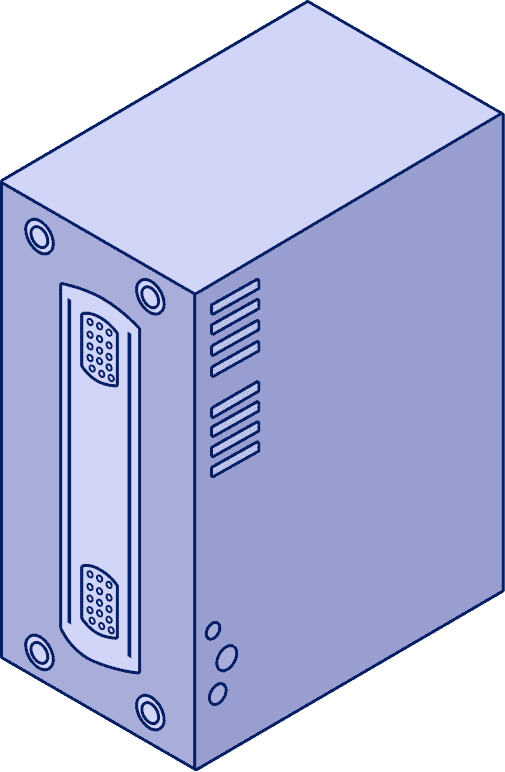Introduction
Denver Furnace installation cost typically ranges between $5,400 to $8,500 on average, which can include the installation of a standard efficiency gas furnace with equipment and labor included.
Furnace Replacement Cost
The cost of installing a furnace will depend on several factors, including the size and type of furnace you choose, the complexity of the installation, and any additional features or accessories you want to include. Here are some rough estimates for the cost of installing a new furnace:
For a standard, single-stage gas furnace, you can expect to pay between $5,600 and $7,500 for the equipment & installation.
For a high-efficiency, two-stage gas furnace, you can expect to pay between $6,400 and $9,800 for equipment & installation and an additional $800 – $1,800 for the installation of a PVC Flue if you’re switching from standard efficiency to high efficiency.
For an electric furnace, you can expect to pay between $5,200 and $9,800 for the unit & installation itself, and an additional $500 to $1,800 for installation of a 220v electric circuit if you’re switching the furnace from gas to electric.
It’s important to note that these furnace installation costs are rough and may vary depending on your specific situation. For example, if you have a larger home or more complex ductwork, the installation may be more expensive. In the meanwhile, here are some rough estimates for furnace installation cost:
| System Size | Cost Range |
|---|---|
| 40K BTU Furnace & Installation | $4,800 to $7,500 |
| 60K BTU Furnace & Installation | $5,200 to $7,800 |
| 80K BTU Furnace & Installation | $5,800 to $8,800 |
| 100K BTU Furnace & Installation | $6,200 to $9,000 |
| 120K BTU Furnace & Installation | $6,500 to $10,700 |
Furnace Sizing Factors
There are several considerations to take into account when sizing a furnace for a home or other building:
Square footage: The size of the space that needs to be heated will impact the size of the furnace needed. A larger space will require a larger furnace to provide sufficient heat.
Climate: The climate where the building is located will also impact the size of the furnace needed. In a colder climate, a larger furnace may be necessary to maintain a comfortable temperature inside the building.
Insulation: The quality and level of insulation in the building will also affect the size of the furnace needed. A well-insulated building will require a smaller furnace to maintain a comfortable temperature.
Number of windows: The number and size of windows in the building can impact the amount of heat that is lost, which will impact the size of the furnace needed.
Number of floors: A building with multiple floors may require a larger furnace to provide sufficient heat to all levels.
Why Furnace Sizing Is Important
When considering a new furnace, it’s important consider the sizing of the unit. Proper furnace sizing is important because an improperly sized furnace can lead to a number of problems, including:
Inefficiency: An undersized furnace will have to work harder to heat a space, leading to higher energy bills and a shorter lifespan for the furnace. An oversized furnace, on the other hand, will cycle on and off more frequently, also leading to higher energy costs and reduced efficiency.
Comfort: An improperly sized furnace may not be able to maintain a consistent, comfortable temperature in the building, leading to fluctuations in indoor temperature and discomfort for the occupants.
Safety: An oversized furnace can cause the thermostat to shut off the furnace before it has completed its heating cycle, leading to a build-up of unburnt fuel and an increased risk of carbon monoxide emissions.
Durability: A furnace that is too small or too large for the space it is heating will be subjected to increased wear and tear, leading to a shorter lifespan and the need for more frequent repairs.
Therefore, it is important to work with an experienced heating and cooling professional to determine the correct size furnace for your specific needs in order to ensure efficiency, comfort, safety, and durability.
| Area Size | Heating BTUs Required | Blower Tonnage |
|---|---|---|
| 1000 sq. ft. & below | 40,000 BTUS | 2 tons |
| 1000 sq. ft. - 2000 sq. ft. | 60,000 - 80,000 BTUs | 3 - 4 tons |
| 2000 sq. ft. - 3000 sq. ft. | 80,000 - 120,000 BTUs | 4 - 5 tons |
| 3000 sq. ft. & above | 120,000 BTUs | 5 tons |
Single-Stage vs Two-Stage vs Variable-Speed
Single-stage, two-stage, and variable-speed furnaces are different types of heating systems that operate at different levels of efficiency and have different capabilities. Here’s a brief overview of each type:
Single-stage furnace: A single-stage furnace is a basic heating system that operates at full capacity when it is turned on. It has only one setting, and it runs at maximum power until the desired temperature is reached.
Two-stage furnace: A two-stage furnace has two settings – low and high – and it adjusts its output based on the temperature inside the home. When the temperature is relatively mild, the furnace will operate at a lower capacity and use less energy. When the temperature is very cold, the furnace will switch to a higher capacity to heat the home more quickly. Two-stage furnaces are more efficient than single-stage furnaces and can help reduce energy bills.
Variable-speed furnace: A variable-speed furnace has a continuous range of output levels, and it adjusts its output based on the temperature inside the home. This allows the furnace to run at a lower capacity most of the time, using less energy and resulting in lower energy bills. Variable-speed furnaces are the most efficient type of furnace, but they are also the most expensive.
In general, two-stage and variable-speed furnaces are more expensive than single-stage furnaces, but they may save you money on energy bills in the long run. The features you choose for your home will affect the furnace installation cost, so it’s best to ask questions and understand what you’re getting for the money.
The structure of your home and existing ductwork are factors that also may need to be considered to determine if a multi-stage furnace is a good choice for your home.
Converting Gas Furnace to Electric
It is possible to convert a gas furnace to an electric furnace, but it is typically a complex and expensive process. Here are some factors to consider if you are thinking about converting your gas furnace to electric:
Cost: Converting a gas furnace to electric can be costly, especially if you need to install new electrical wiring or circuits to accommodate the electric furnace. In addition, high-efficiency electric furnaces can be more expensive than gas furnaces.
Electrical Panel capacity: Before you can install an electric furnace, you need to make sure your home has enough electrical capacity to support it. This may require upgrading your electrical panel or installing additional circuits, which can add to the cost of the conversion.
Heating efficiency: Gas furnaces are typically more efficient than electric furnaces in producing heat per unit of energy, so converting to electric may result in higher energy bills. If you have solar or plan on having a solar array installed in the near future, this factor is less important.
We’ve compiled a list of common costs associated with conversion of a gas furnace to electric furnace below for your reference:
| Additional Costs | Cost Range |
|---|---|
| Electrical Panel Upgrade (if required) | $3,200 to $6,200 |
| Adding Electrical Subpanel (if possible) | $1,400 to $2,800 |
| 220v Circuit Installation | $600 to $2,400 |
| Capping Gas Lines | $50 to $220 |
Furnace AFUE Rating
The efficiency rating of a furnace is a measure of how much of the fuel it consumes is used to produce heat, as opposed to being wasted. The annual fuel utilization efficiency (AFUE) rating is a standard measure of furnace efficiency, and it is expressed as a percentage. A higher AFUE rating means the furnace is more efficient and uses less fuel to produce the same amount of heat. Here are some common AFUE ratings for different types of furnaces:
- High-efficiency gas furnaces: 90% AFUE or higher
- Standard-efficiency gas furnaces: 80% to 89% AFUE
In general, as the AFUE rating increases, so does the new furnace installation cost. New high efficiency furnace installations in Colorado for homes with Xcel Energy Gas & Electric accounts are eligble for $300 in rebates.
High Efficiency vs Standard Efficiency
High-efficiency gas furnaces are more efficient than standard-efficiency gas furnaces, which means they use less energy to produce the same amount of heat. Here are some key differences between high-efficiency and standard-efficiency gas furnaces:
- Energy efficiency: High-efficiency gas furnaces have annual fuel utilization efficiency (AFUE) ratings of 90% or higher, which means they use at least 90% of the fuel they consume to produce heat. Standard-efficiency gas furnaces have AFUE ratings of 80% or lower, which means they are less efficient and waste more energy.
- Venting System: PVC flues are typically required for high-efficiency gas furnaces because they are an important part of the ventilation system for the furnace. The PVC flue is typically installed horizontally (side-ways) as opposed to the metal flues for standard efficiency furnaces that use chimneys or vertical metal pipes to exhaust the combusted gases.
- Operating costs: Because high-efficiency gas furnaces use less energy, they typically have lower operating costs than standard-efficiency gas furnaces. This means you may see lower energy bills if you choose a high-efficiency furnace.
- Upfront costs: High-efficiency gas furnaces are generally more expensive to purchase than standard-efficiency gas furnaces. However, the long-term energy savings may offset the higher upfront cost over time.
- Environmental impact: High-efficiency gas furnaces produce fewer greenhouse gas emissions than standard-efficiency gas furnaces, making them a more environmentally friendly choice.
The cost of labor portion of the furnace installation cost will depend on a number of factors, including the type of furnace you are installing, the complexity of the installation, and the location of your home. Some other factors that can affect the cost of labor for installing a furnace include the size of your home, the type of fuel the furnace uses (such as natural gas or propane), and the experience and expertise of the technician who is performing the installation.
In general, you can expect to pay anywhere from $2,500 to $6,000 for labor, materials & supplies to install a new furnace, depending on these and other factors. This furnace installation cost will typically include the time and labor required to remove the old furnace and install the new one, as well as any necessary piping, venting, or electrical work.
On average, you can expect to pay anywhere from $4,900 to $6,500 for a new furnace for a 1,500 square foot home. Furnace installation cost will vary depending on the specific characteristics of your home and the type of furnace you choose.
The cost of installing a furnace and ductwork in a home will depend on a number of factors, including the size and complexity of the project, the type of furnace and ductwork you choose, and the location of your home.
In general, you can expect to pay anywhere from $14,000 to $25,000 or more for the installation of a furnace and ductwork in a 1500 sqf home.
This cost will typically include the cost of the furnace itself, as well as the labor and materials needed to install the unit and the ductwork.
There are several ways you can pay for a new furnace, depending on your budget and financial situation. Here are a few alternative options to cash or credit card that you might want to consider:
- Work with a financing company: UniColorado Heating & Cooling and some other HVAC contractors or furnace dealers offer financing options for products and services. These companies may offer a range of payment plans, including monthly installments or deferred payments.
- Use a regional financing program: Some utility companies and government agencies offer financing programs to help homeowners pay for energy-efficient home improvements, including new furnaces. These programs may offer low-interest loans, grants, or rebates to help offset the cost of a new furnace.
There are several reasons why furnace installation cost may be higher than expected. Some of the factors that can contribute to the cost of furnace installation include:
- The cost of the furnace itself: The price of a new furnace can vary widely depending on the size and type of furnace you need, the fuel source it uses, and its efficiency rating. Higher-priced furnaces tend to be more efficient and come with more advanced features, which can increase the overall cost of the installation.
- The cost of labor: Installing a furnace is a complex and technical task that requires specialized skills and experience. HVAC technicians who are trained and certified to install furnaces charge for their labor, which can add to the overall cost of the installation.
- The cost of materials: In addition to the furnace itself, there are other materials and supplies that are needed for the installation, such as piping, venting, electrical components, and thermostats. These materials can add to the overall cost of the installation.
- The complexity of the installation: The cost of installing a furnace can also be affected by the complexity of the project. Factors that can increase the complexity of the installation include the size and layout of your home, the condition of your existing heating system, and any additional features or options you choose.
- The location of your home: The cost of furnace installation can vary depending on where you live. In some areas, the cost of labor and materials may be higher due to local market conditions.
Typically, a standard furnace installation typically takes one full day (morning to evening) to complete, although more complex installations or installations that involve additional work (such as upgrading ductwork or installing a new thermostat) may take longer.
There are several signs that you might need a new furnace, including:
- Your furnace is old: If your furnace is more than 15 years old, it may be reaching the end of its lifespan. As furnaces age, they can become less efficient and more prone to breakdowns, which can increase your energy bills and cause disruption to your home comfort. If your furnace is getting up there in age, it may be time to consider replacing it.
- Your furnace is frequently breaking down: If your furnace is experiencing frequent breakdowns or is in need of frequent repairs, it may be more cost-effective to replace it rather than continuing to invest in repairs.
- Your energy bills are increasing: If you’ve noticed a sudden increase in your energy bills, it could be a sign that your furnace is becoming less efficient. An inefficient furnace has to work harder to heat your home, which can result in higher energy bills.
- Your home is unevenly heated: If you notice that some rooms in your home are much warmer or cooler than others, it could be a sign that your furnace is not working effectively. An uneven heating pattern is often a sign of an aging or inefficient furnace.
- You hear strange noises coming from your furnace: If you hear strange noises coming from your furnace, such as banging, popping, or squealing, it could be a sign that there is a problem with the unit. These noises can indicate that something is wrong with the furnace and it may need to be repaired or replaced.
On average, you can expect a furnace to last anywhere from 15 to 20 years, with some high-quality units lasting even longer.


